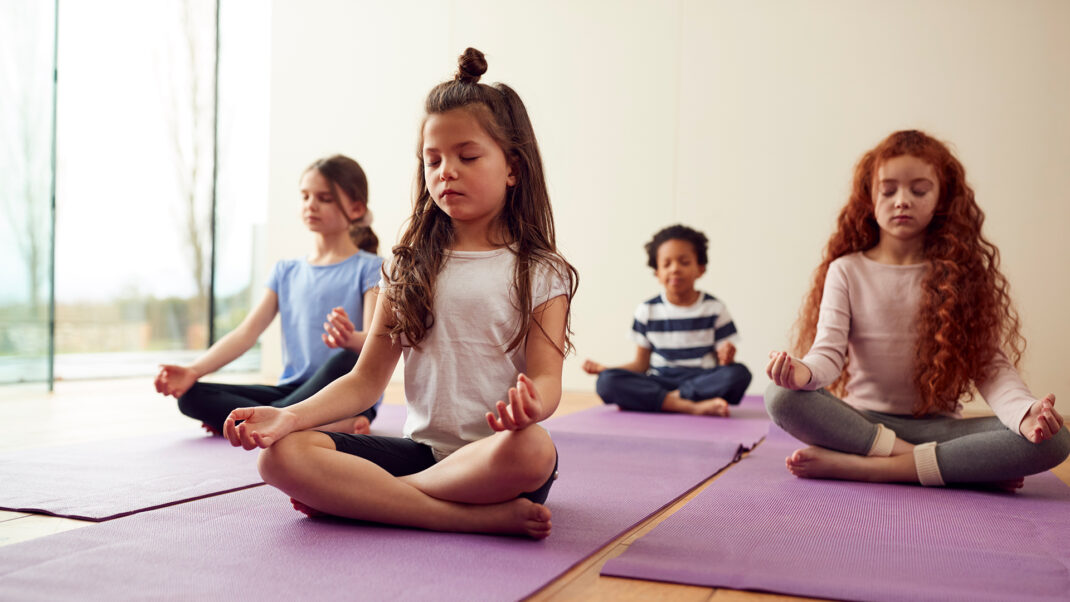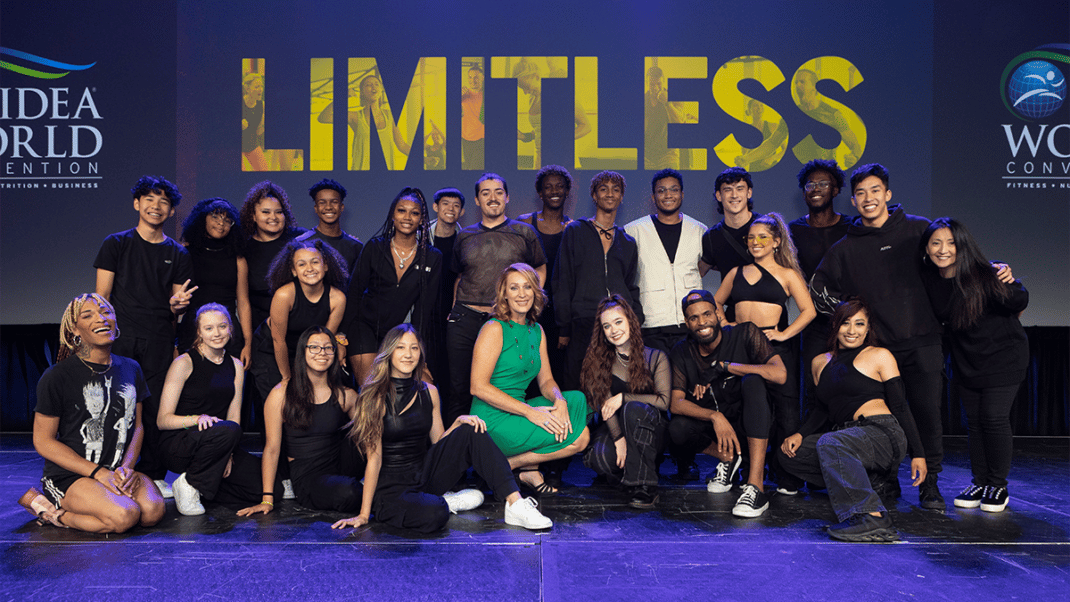Yoga Lesson Plan 1: Hip-Opening and Patience
This is the first of a six-part yoga lesson plan series that will provide both a physical focus to guide your choice of postures, and a practice focus to help students explore an important yoga principle. The intention is to present guidelines for creating a coherent and thoughtful class experience. The suggestions are broad enough to allow you to choose poses that are appropriate for your students.
Yoga Lesson plan 2 Yoga Lesson Plan 5
Yoga Lesson plan 3 Yoga Lesson Plan 6
Yoga Lesson Plan One
Physical theme: hip-opening poses
Practice principle: patience
Opening (5 minutes)
Begin with a pose that will serve as a check-in. You will return to this yoga pose later when you invite students to notice changes in the pose after a patient practice of hip-opening. The pose should be gentle enough to be practiced without much preparation. Suggested yoga poses include a standing forward bend with hands on a block for support, reclining pigeon pose (ankle-to-opposite-knee hip stretch) or a reclining one-leg hamstring stretch using a strap.
Guide students to only go as far as they comfortably can in the chosen pose. Let them know that sensation is information. They are collecting information about where they are in the present moment. As students relax in the yoga pose, you can introduce some basic anatomy information about the hips that will encourage the theme of patience. Explain that the hips have many layers of muscles, and that as one layer relaxes (for example, the gluteus maximus), students may become aware of sensation in a deeper muscle (for example, the piriformis). Encourage them to be curious about how sensation shifts in a pose.
Warm-Up (10-15 minutes)
Continue the practice with a dynamic warm-up. This might include cat/cow on all fours, moving between downward facing dog and child’s pose, or sun salutations. Encourage students to feel the movement of the pelvis in these warm-ups. Invite them to imagine, through sensation, how different muscles connect to the pelvis. For example, in each forward bending movement, guide students to notice how the forward tilt of the pelvis gently pulls the hamstring muscles at the back of the hips.
Standing Yoga Poses (15-20 minutes)
Choose standing yoga poses that use the hip muscles for strength and steadiness. These poses will create heat in the hips and prepare students for deep opening. Chair pose and lunge poses, including the warrior poses, are good poses to start with. Build up to standing balancing poses (such as tree pose) that use the deep rotator muscles of the hips to anchor the balance. To bring the theme of patience to this part of the class, stay in the poses a little bit longer than students are used to. Encourage them to find a way to be both steady and comfortable in each pose. Ask “What would you do differently in this pose if you had no idea whether we would be here for five more breaths or 500 more breaths? What can you do to relax unnecessary struggle in the pose, while still honoring its integrity?”
Deep Release (15-20 minutes)
After a sufficiently challenging standing sequence, students will be eager to explore yoga poses that require less effort and that are more grounded. For this final part of class, choose a sequence that will stretch muscles all the way around the hip. Seated forward bends, including head to knee pose, can emphasize the hamstrings and lower back. Crossed-legged poses, including cow face pose and spinal twists, provide greater access to the abductors and external rotators of the hip. Seated side bends allow students to feel how the muscles of the side trunk and low back connect to the pelvis. Low lunges and reclining hero pose open the hip flexors. Bound angle and wide angle forward bend open the groin and adductors. Pigeon pose might be a good apex pose, as it requires openness in many of these areas.
Once you’ve made instructions for entering and modifying the poses clear, give students a bit of silence to simply be in the pose. It typically takes students five breaths to shift their focus from listening and trying to understand the pose, to actually experiencing the pose. After five breaths, ask students to notice what they feel, and then give them the space to observe sensation. Let students know that the sensation of stretch should dissolve rather than intensify.
Closing (5 minutes)
Bring students back to the same check-in pose from the opening of class. Ask them to notice how the pose feels now. Ask if certain landmarks (such as how far they can reach in the pose) have changed. Students who have practiced with sensitivity and patience throughout class may observe that the internal experience of the pose ¾ the sensation of stretch ¾ has stayed relatively the same, while the external shape of the pose has deepened dramatically. Others may notice that the essential shape of the pose is the same, but it is a much more comfortable place to be. Both observations demonstrate the take-home message of the practice: when we practice with patient persistence, transformation occurs.





